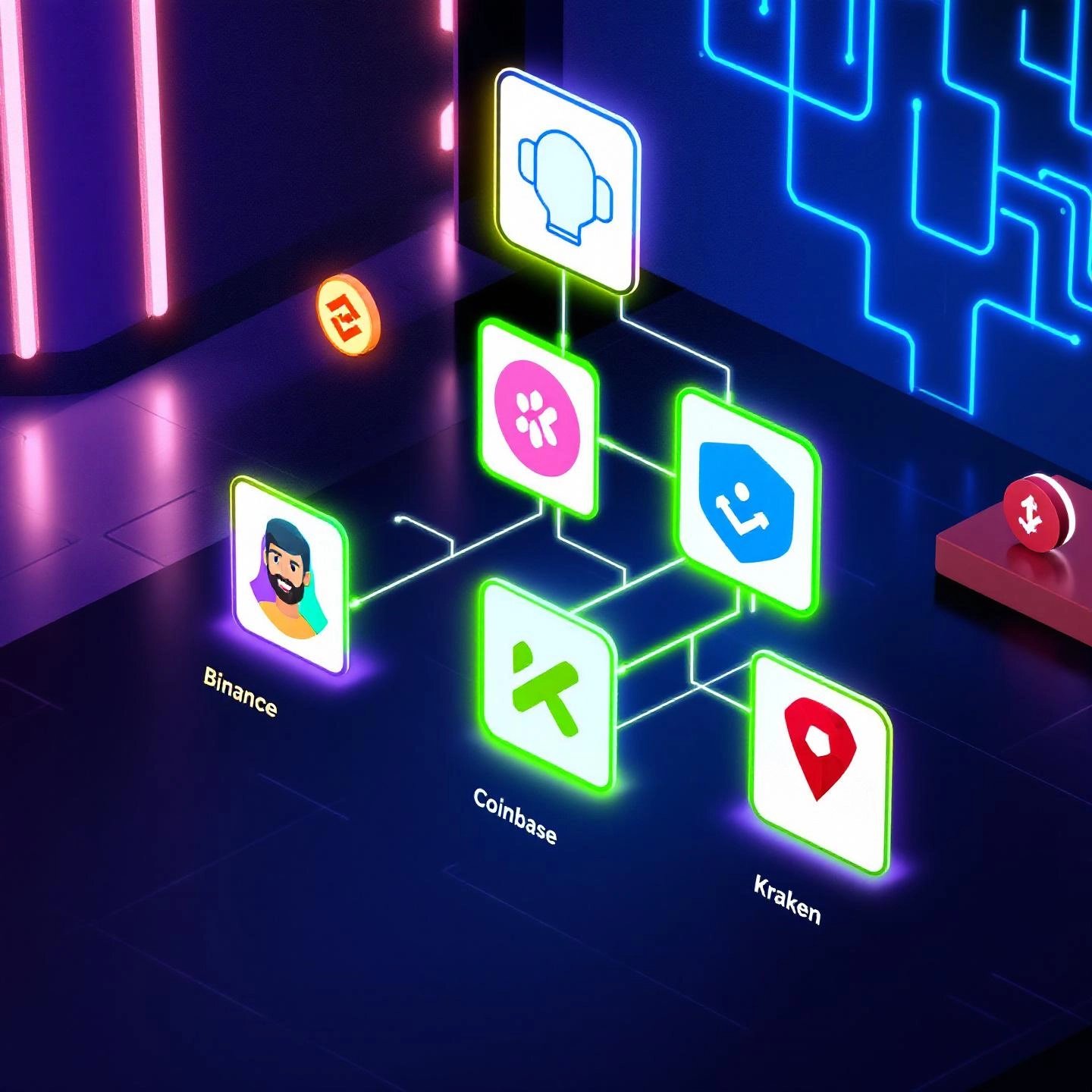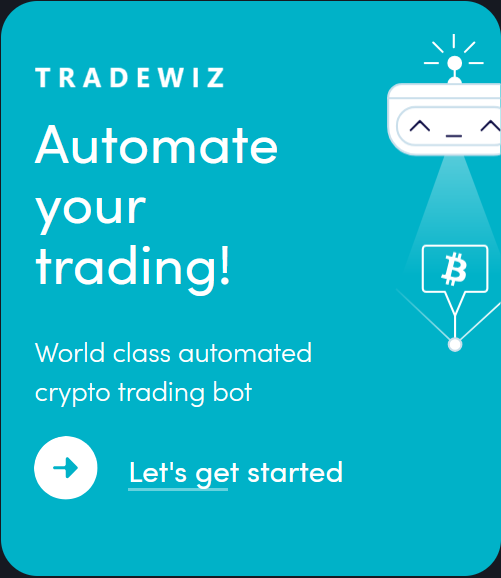Introduction to AI Tools for Crypto Arbitrage Trading
Ever wondered how some traders consistently spot profit opportunities in the fast-paced world of crypto? Imagine trying to capitalize on fleeting price differences across dozens of exchanges—while handling a flood of data and racing against the clock. Sounds complex? That’s the reality of crypto arbitrage trading in today’s 24/7 digital asset markets. This is where AI tools for crypto arbitrage trading step in, transforming an intricate process into a finely tuned, technology-driven strategy.
What is Crypto Arbitrage? At its core, crypto arbitrage is a trading approach that exploits price discrepancies for the same cryptocurrency across different platforms. For example, if Bitcoin is priced at $84,500 on Exchange A and $84,650 on Exchange B, a trader could buy on the first and sell on the second—pocketing the difference minus fees. While this may sound straightforward, the actual execution is anything but simple. The crypto market is fragmented, with prices fluctuating rapidly and opportunities vanishing in seconds. In the early days, price gaps could last minutes or even hours, but in 2025, these windows often close in mere seconds as high-frequency trading systems and bots correct imbalances almost instantly.
The Challenges of Modern Arbitrage
- Speed: Price differences are short-lived, requiring lightning-fast identification and execution.
- Data Volume: Traders must monitor prices, order books, and liquidity across dozens of exchanges simultaneously.
- 24/7 Markets: Crypto never sleeps, so opportunities—and risks—emerge at any hour of the day or night.
- Fee Sensitivity: With typical arbitrage spreads narrowing to 0.1–2%, network and trading fees can easily erase profits.
- Liquidity and Slippage: Thin order books or sudden market moves can cause losses, even when a price gap is spotted.
Given these crypto arbitrage challenges, manual trading is rarely effective for experienced traders aiming for consistent results. The need for speed, accuracy, and round-the-clock vigilance has made automation—and especially artificial intelligence—a necessity rather than a luxury.
How AI Tools Address Arbitrage Hurdles
AI-powered systems are revolutionizing the way traders approach arbitrage. These tools can:
- Process and analyze vast amounts of real-time market data in milliseconds
- Instantly identify and evaluate arbitrage opportunities, factoring in fees and slippage
- Execute trades automatically, reducing the risk of missed chances due to human delay
- Adapt to sudden market shifts using machine learning and predictive analytics
Think of AI as your always-on, ultra-fast trading assistant—scanning dozens of exchanges, calculating true net profit, and executing complex strategies while you focus on optimizing your overall approach.
What to Expect from This Guide
This article is designed for experienced traders ready to take their strategy to the next level. You’ll learn how to select, integrate, and optimize AI tools for crypto arbitrage trading, gaining a clear edge in an increasingly competitive landscape. We’ll break down the core functions of AI arbitrage platforms, compare leading tool types, and offer practical checklists to help you make informed decisions. By the end, you’ll know how to harness AI to turn crypto arbitrage challenges into opportunities for consistent, scalable profits.

Understanding the Core Functions of AI in Crypto Arbitrage
When you hear about AI bots making split-second trades, do you ever wonder what’s really happening under the hood? Let’s demystify the technology so you know exactly how these advanced tools give traders an edge in the race for crypto arbitrage profits.
How Machine Learning Powers Smarter Trading Decisions
Imagine trying to spot subtle price patterns and fleeting opportunities across dozens of exchanges—every second, all day, every day. Sounds impossible for a human, right? This is where machine learning in crypto trading comes into play. AI-driven arbitrage bots leverage machine learning algorithms to:
- Identify recurring patterns: By analyzing historical and live market data, AI detects trends, anomalies, and signals that humans might miss, such as recurring price gaps or unusual order book activity.
- Predict short-term price movements: Rather than just reacting to the present, modern AI models use predictive analytics to estimate where prices are likely to move next—helping to anticipate profitable arbitrage windows before they vanish.
- Continuously adapt: As market conditions shift, machine learning models update their parameters, learning from new data to improve accuracy over time (BitDegree).
Real-Time Crypto Arbitrage Analysis: Monitoring the Market at Lightning Speed
Speed is everything in arbitrage. Opportunities can disappear in milliseconds, so AI tools are built for real-time crypto arbitrage analysis. Here’s how they do it:
- Order book monitoring: AI bots scan the live order books of multiple exchanges, tracking bid/ask prices, trading volumes, and liquidity conditions in real time.
- Cross-exchange price comparison: The system instantly compares asset prices across platforms, flagging discrepancies large enough to cover fees and slippage.
- Latency minimization: High-performance architecture, such as custom data parsers and lock-free programming, reduces processing delays—sometimes down to microseconds—ensuring trades are executed before the opportunity disappears (Medium).
Automated Decision-Making and Trade Execution
Spotting an opportunity is only half the battle. AI arbitrage tools are designed to handle the entire process, from detection to execution, with minimal human intervention:
- Automated trade execution: Once a profitable gap is found, the AI bot places buy and sell orders simultaneously on the relevant exchanges, ensuring near-instant execution.
- Fee and slippage calculation: Before pulling the trigger, the bot calculates all trading, withdrawal, and network fees, as well as potential slippage, to ensure the trade remains profitable after costs.
- Risk controls: Advanced systems integrate risk management protocols, such as order size limits and stop-loss mechanisms, to minimize exposure during volatile swings or unexpected latency.
Key Takeaway: The combination of machine learning, real-time data analysis, and automated decision-making makes AI tools for crypto arbitrage trading far more effective than manual or rule-based bots. These systems can process massive amounts of information, adapt to changing markets, and execute complex trades with speed and precision that’s simply out of reach for human traders.
Now that you understand the core functions powering AI-driven arbitrage, it’s time to explore the real-world advantages these tools offer for professional traders looking to maximize efficiency and returns.
Key Advantages of Leveraging AI for Arbitrage Opportunities
When you consider the sheer speed and complexity of today’s crypto markets, it’s easy to see why even the most seasoned traders are turning to automation. But what exactly makes AI-powered tools so indispensable? Let’s break down the core ai trading bot advantages and see how they translate into real-world crypto arbitrage automation benefits for your trading strategy.
Why AI Tools Outperform Manual Arbitrage
Imagine trying to track price differences across ten exchanges, manually calculating fees, and executing trades—all while the market shifts every second. Even with experience, you’d likely miss most opportunities or make costly errors. AI-powered bots, on the other hand, are built to overcome these human limitations, offering several game-changing benefits:
- Unmatched Speed and Efficiency: AI bots process vast amounts of real-time data from multiple exchanges, identifying and executing arbitrage trades in milliseconds. This lightning-fast reaction is crucial, as price gaps often disappear almost instantly in volatile markets.
- Enhanced Accuracy and Consistency: Unlike manual trading, which is prone to emotional decisions or calculation errors, AI bots make data-driven choices based on pre-set strategies. They execute trades exactly as programmed, ensuring profits are not lost to hesitation or oversight.
- 24/7 Market Coverage: Crypto never sleeps, and neither do AI bots. Operating around the clock, these tools monitor global exchanges regardless of time zone, capturing opportunities that would otherwise be missed during off-hours or overnight.(Medium-TradeWiz)
- Scalability for High-Volume Trading: AI bots can handle hundreds or even thousands of trades simultaneously across multiple platforms. This scalability allows traders to diversify their strategies and maximize profits without being limited by human bandwidth or fatigue.
- Reduced Human Error: By removing emotion and guesswork from the equation, AI tools help avoid costly mistakes—such as miscalculating fees, missing a profitable window, or executing trades based on fear or greed.
- Continuous Learning and Adaptation: Advanced bots use machine learning to refine their strategies over time, adjusting to new market patterns and improving performance with each trade. This means your trading approach evolves as the market changes, keeping you competitive even as conditions shift.
- Comprehensive Risk Management: Many AI arbitrage tools come equipped with built-in risk controls. Features like dynamic stop-loss settings, trade size limits, and real-time monitoring help protect your capital and minimize exposure during unexpected volatility.
Pro Tip: The real edge of AI in arbitrage isn’t just speed—it’s the combination of precision, scalability, and tireless operation. By automating the entire process, you free yourself from routine monitoring and can focus on higher-level strategy and optimization.
Turning Technology into Tangible Results
When you put these advantages together, the impact is clear: AI-powered arbitrage tools enable you to act faster, scale bigger, and operate smarter than ever before. Whether you’re looking to automate a handful of trades or manage complex, multi-exchange strategies, leveraging AI ensures you never leave profits on the table due to human limitations.
Curious how these benefits translate into specific tool types and features? Next, we’ll break down the main categories of AI arbitrage solutions available and help you identify which fits your trading style best.

Types of AI-Powered Crypto Arbitrage Tools Available
When you start exploring ai tools for crypto arbitrage trading, you’ll notice there’s no one-size-fits-all solution. The landscape is packed with a mix of platforms, frameworks, specialized bots, and analytics services—each designed for specific trading needs and skill levels. So, how do you choose the best ai crypto trading bot for your strategy?
Breaking Down the Main Categories
Imagine you’re shopping for a new car. You wouldn’t compare a sports car to a family van without considering your goals, right? The same logic applies to arbitrage tools. Let’s break down the primary categories you’ll encounter:
- Speed-Optimized Single-Chain Bots: Designed for ultra-fast execution on a single blockchain, often with copy-trading or strategy replication features.
- All-in-One Arbitrage Platforms: User-friendly platforms that combine multiple trading bots, portfolio management, and cross-exchange arbitrage in one dashboard.
- Customizable Bot Frameworks: Developer-focused solutions offering scripting and advanced customization for traders who want to build or tweak their own strategies.
- Integrated Exchange Bots: Bots that are built into or tightly coupled with a specific exchange, offering easy setup but less flexibility.
- Signal & Analytics Services: Tools that focus on identifying arbitrage opportunities and sending real-time alerts, leaving the execution to you or your own bot.
Crypto Arbitrage Bot Comparison Table
| Tool Type | Best Use Case | Key Features | Example Platforms |
|---|---|---|---|
| Speed-Optimized Single-Chain Bots | Solana chain arbitrage, copy trading, strategy replication |
| TradeWiz |
| All-in-One Arbitrage Platforms | Multi-exchange arbitrage, portfolio automation, ease of use |
| Bitsgap, Pionex |
| Customizable Bot Frameworks | Advanced users, custom strategies, backtesting |
| HaasOnline, Trality |
| Integrated Exchange Bots | Beginner-friendly, low setup, single-exchange trading |
| Pionex |
| Signal & Analytics Services | Manual or semi-automated traders, real-time opportunity alerts |
| ArbitrageScanner.io |
Spotlight: TradeWiz—Speed and Strategy for Solana Arbitrage
Let’s say you’re focused on Solana and want to capitalize on fleeting price gaps or mirror the moves of top-performing wallets. This is where TradeWiz stands out. Built for speed, TradeWiz executes trades in under two seconds and enables users to copy strategies from “smart money” wallets—essential for those aiming to replicate proven arbitrage or front-running tactics. With deep customization options, you can set trade frequency, minimum market cap, and liquidity filters, making it a flexible choice for both hands-off beginners and advanced traders looking to fine-tune their edge.
While TradeWiz is best for single-chain arbitrage and strategy replication on Solana, other platforms like Bitsgap or HaasOnline may suit those seeking broader multi-exchange or custom-coded solutions. The right pick depends on your technical skills, risk appetite, and whether you value speed, flexibility, or hands-off automation most.
Choosing the Right Tool for Your Needs
When comparing options, ask yourself:
- Do I need ultra-fast execution for single-chain or DeFi arbitrage?
- Am I looking for cross-exchange capabilities or simple, built-in bots?
- How much customization and control do I want?
- Am I comfortable with scripting, or do I prefer no-code solutions?
By understanding these categories and your own priorities, you’ll be able to pinpoint the best AI crypto trading bot for your unique arbitrage goals. Next, we’ll walk through a practical checklist to help you evaluate and select the right tool for your strategy.
How to Select the Best AI Arbitrage Tool for Your Strategy
When you’re ready to choose a crypto arbitrage bot, the sheer number of options can feel overwhelming. How do you separate the truly effective tools from the hype? Imagine this: You’ve found a promising opportunity, but your bot’s too slow or lacks security—profits vanish before you can act. That’s why a clear, practical checklist is your best friend in picking the right AI-powered trading assistant.
Key Factors to Consider Before Committing
Let’s break down the essential criteria in this ai arbitrage tool checklist—so you can confidently evaluate, compare, and ultimately select the solution that fits your trading style and risk profile.
| Checklist Item | What to Look For | Why It Matters | Example/Notes |
|---|---|---|---|
| 1. Speed & Execution Performance | Ultra-fast trade execution (sub-2 seconds for single-chain bots) | Captures fleeting arbitrage gaps before they close | TradeWiz boasts 1.1–2.1 second execution on Solana |
| 2. Exchange Connectivity | Supports your preferred exchanges and trading pairs; robust API integration | Wider access means more arbitrage opportunities and liquidity | Look for bots compatible with major exchanges (e.g., Binance, Bybit, Kraken) |
| 3. Security & API Protection | API key encryption, permission controls, regular security audits | Protects your funds from unauthorized access and exploits | Tools should restrict API permissions to trading only, never withdrawals |
| 4. Customization & Strategy Flexibility | Ability to set trade frequency, filters (min. market cap, liquidity), copy trading rules | Lets you tailor the bot to your risk tolerance and trading goals | TradeWiz offers deep copy-trading customization; frameworks like HaasOnline allow scripting |
| 5. Backtesting & Performance Metrics | Historical data testing, live simulation, clear reporting (net profit, win rate, drawdown) | Helps validate strategies and avoid costly mistakes before real capital is at risk | Look for platforms with built-in backtesting or support for external data feeds |
| 6. Risk Management Tools | Stop-loss settings, position limits, automated monitoring, multi-exchange diversification | Minimizes losses from volatility or technical failures | Resident.com highlights the importance of automated risk protocols |
| 7. Pricing & Cost Transparency | Clear subscription fees, no hidden costs, trading fee awareness | Ensures your arbitrage profits aren’t eaten up by unexpected charges | Compare monthly fees, infrastructure costs, and trading commissions |
| 8. User Experience & Support | Intuitive setup, responsive customer service, community resources | Saves time and reduces frustration, especially for complex integrations | TradeWiz’s Telegram bot offers a streamlined, beginner-friendly interface |
| 9. Transparency & Reputation | Documented performance, user feedback, public audits | Builds trust and helps you avoid unreliable or “black box” bots | Check Reddit, X, and review sites for real trader experiences |
Putting Your Checklist to Work
- Start with your priorities: Is speed your top concern? Are you focused on Solana, or do you need cross-exchange coverage?
- Test before you commit: Use trial periods, paper trading, or minimal capital to validate performance and fit.
- Stay flexible: As your strategy evolves, revisit this checklist to ensure your chosen tool keeps pace with the market and your goals.
By following this structured approach, you’ll avoid common pitfalls and set yourself up for sustainable success in the fast-moving world of AI-driven arbitrage. Next, let’s walk through the steps for securely integrating your chosen tool with your exchange accounts, so you can move from planning to live trading with confidence.
Seamlessly Integrating AI Tools with Your Crypto Exchange Accounts
Ready to automate your crypto arbitrage strategy, but not sure how to actually connect your AI bot to your trading accounts? You’re not alone. When you want to integrate an AI trading bot with your exchange, the process can seem technical—but breaking it down into clear steps makes it manageable and secure.
Step 1: Choose an Exchange with Robust API Support
Before anything else, ensure your chosen exchange supports trading bots and offers a reliable, well-documented API. Exchanges like Binance, Kraken, and Bybit are popular for their comprehensive API features. Familiarize yourself with the API documentation—it’ll save you time and headaches down the line.
Step 2: Generate and Configure API Keys Securely
API keys act as the bridge between your trading bot and the exchange. Think of them as digital credentials that grant your bot permission to read data and execute trades on your behalf. Here’s how to handle them securely:
- Generate keys in your exchange’s API management panel. Typically, you’ll find this under account settings.
- Restrict permissions to only what’s needed—enable trading, but disable withdrawals to protect your funds if the keys are compromised.
- Store your API keys securely. Never share them publicly or store them in plain text. Use encrypted password managers or secure environment variables.
- Enable two-factor authentication (2FA) on your exchange account for an added layer of security.
Remember, mishandling API keys is one of the biggest risks in bot trading. If someone gains access, they could execute unauthorized trades or drain your account.
Step 3: Integrate the Bot and Set Up Trading Pairs
Most AI arbitrage tools will prompt you to enter your API keys and select which trading pairs you want to monitor. Here’s what you’ll typically do:
- Input your API key and secret into the bot’s configuration panel.
- Select trading pairs relevant to your arbitrage strategy (e.g., BTC/USDT, ETH/BTC).
- Allocate capital for each pair or strategy, ensuring you don’t overexpose your portfolio to a single asset or trade.
Some bots allow for advanced settings—like setting minimum liquidity requirements or filtering for certain market caps—to further refine your approach.
Step 4: Test the Connection—Paper Trading and Small Stakes
Before you go live with significant capital, always test your integration:
- Use paper trading (simulation mode) if available, to ensure your bot’s logic and API connection work as expected without risking real funds.
- Start with small amounts for live testing. Monitor the bot’s behavior, order execution, and error handling in real market conditions.
- Check logs and reports for any anomalies or failed trades, and make adjustments as needed.
Testing reduces the risk of costly mistakes and builds your confidence in the bot’s operations.
Step 5: Ongoing Security and Performance Monitoring
Even after a successful setup, vigilance is key. Here’s how to maintain a secure crypto bot setup:
- Regularly review API permissions and rotate keys periodically.
- Monitor account activity for any unauthorized trades or unexpected behavior.
- Keep your bot software updated to patch security vulnerabilities and add new features.
- Set up alerts for large trades, failed orders, or unusual drawdowns.
Key Takeaway: Integrating your AI arbitrage tool with exchanges isn’t just about plugging in keys—it’s about building a secure, reliable trading pipeline. By following these steps, you’ll reduce risk, ensure smooth operation, and position your bot for long-term success.
Once your integration is live and secure, the next step is to focus on advanced risk management. Let’s explore how to automate risk controls and handle the unique challenges of AI-powered arbitrage in the following section.

Mastering Crypto Arbitrage Risk Management
When you hand over the reins to an AI trading bot, do you ever wonder what keeps your capital safe during wild market swings? Or how your automated system handles those split-second hiccups that can turn a profitable trade into a loss? Effective crypto arbitrage risk management is the backbone of sustainable, AI-powered trading—especially in a market where volatility and speed are the norm.
Why AI Trading Bot Risk Is Different
Imagine two traders: one manually executing arbitrage trades, the other relying on an advanced AI bot. Both face the same market, but their risks—and the ways they manage them—are fundamentally different. Manual traders worry about missing signals or making emotional decisions. With AI bots, the risks shift to algorithmic misfires, technical failures, and the need for constant adaptation. So, how do you keep your edge while letting automation do the heavy lifting?
Automated Risk Parameters: Your First Line of Defense
AI arbitrage bots excel at enforcing risk controls with precision and discipline. Here are some of the most effective automated parameters you can set:
- Stop Loss & Take Profit: Define clear thresholds for when the bot exits a position, preventing catastrophic losses in fast-moving markets. For high-frequency arbitrage, stop losses might be as tight as 0.2–0.5%, while swing strategies use wider bands.
- Position Sizing: Use fixed amounts or percentage-based allocation to cap exposure on any single trade, ensuring no single error wipes out your portfolio.
- Drawdown Limits: Set daily or per-bot loss thresholds (e.g., 10%), automatically pausing trading if exceeded to avoid compounding losses.
- Cooldown Intervals: Insert mandatory breaks after a loss to prevent the bot from “chasing” bad trades in volatile conditions.
- Trailing Stops: Let profits run while locking in gains, as the bot dynamically adjusts exit points when the market moves in your favor.
Handling Slippage, Latency, and Execution Risks
Ever noticed how the price you see is not always the price you get? That’s slippage—and in high-speed arbitrage, it can quickly erode profits. AI bots address these issues by:
- Using limit orders to control entry and exit prices, minimizing slippage compared to market orders.
- Monitoring latency—the time between identifying an opportunity and executing the trade. Bots with low-latency architecture react in milliseconds, capturing price gaps before they vanish.
- Retry delays and smart order routing to handle failed trades or low liquidity, ensuring the bot doesn’t flood the market with repeated orders.
Liquidity, Exchange, and Diversification Risks
What if your bot finds an opportunity, but the order book is too thin? Or an exchange goes offline mid-trade? Here’s how advanced bots manage these scenarios:
- Liquidity Filters: Only trade pairs with sufficient volume, avoiding illiquid markets where slippage is high.
- Exchange Diversification: Spread capital across multiple exchanges to reduce exposure to downtime, API issues, or sudden delistings.
- Fee Accounting: Calculate all trading and withdrawal fees upfront to ensure net profitability after expenses.
Traditional Risks vs. AI-Specific Risks: A Side-by-Side Comparison
| Risk Category | Manual Trading | AI Trading Bot Risk | How AI Tools Address It |
|---|---|---|---|
| Emotional Decisions | High—subject to fear/greed | Low—rules-based execution | Automated logic eliminates emotional bias |
| Market Volatility | Manual stop loss, slow reaction | Automated stop loss, rapid response | Instant parameter enforcement, dynamic adjustment |
| Overfitting/Static Strategy | Rare—manual tweaks possible | Moderate—if bot not adaptive | AI bots with machine learning adapt to new data |
| Technical Failures | Rare (manual process) | API errors, downtime, logic bugs | Automated monitoring, retry logic, multi-exchange setup |
| Slippage & Latency | Variable—manual entry slow | High risk if not optimized | Low-latency architecture, limit orders, real-time monitoring |
| Liquidity Risk | Manual checks, easy to miss | Can be overlooked by rigid bots | Liquidity filters, minimum volume thresholds |
| Exchange Risk | Manual withdrawal/diversification | API lockout, exchange outages | Multi-exchange deployment, automatic failover |
Best Practices for Ongoing Risk Management
- Backtest and Simulate: Always test risk settings on historical data and in paper trading before going live.
- Review and Adapt: Regularly audit bot logs and performance metrics to refine your risk parameters as the market evolves.
- Layer Controls: Combine stop losses, drawdown limits, and cooldown timers for robust protection.
- Stay Secure: Limit API permissions, use 2FA, and rotate keys to protect against unauthorized access.
Key Takeaway: AI arbitrage bots offer powerful, automated risk controls—but they require thoughtful configuration and ongoing oversight. By understanding both the unique risks and the mitigation strategies available, you’ll not only protect your capital but also unlock the full potential of AI-driven trading.
With robust risk management in place, you can confidently measure and optimize your bot’s performance—ensuring your trading system adapts and improves as the market changes. Next, we’ll dive into practical methods for tracking, analyzing, and enhancing your AI arbitrage results.
Measuring and Optimizing the Performance of Your AI Trading Bot
How do you know if your AI trading bot is truly working for you—or just spinning its wheels? When you’re managing automated strategies, it’s easy to set and forget. But in crypto arbitrage, ongoing analysis and optimization are what separate consistent winners from the rest. Let’s break down how to track ai trading bot performance and turn raw data into real trading improvements.
Key Performance Indicators: What Should You Measure?
Imagine reviewing your bot’s results after a month. What numbers actually matter? Here are the most important KPIs for evaluating performance in crypto arbitrage:
- Net Profit and ROI: The bottom line—how much you’ve gained (or lost) after all trades, fees, and slippage.
- Win Rate: The percentage of profitable trades compared to total trades executed.
- Maximum Drawdown: The largest peak-to-trough decline in your trading balance, revealing risk exposure.
- Profit Factor: The ratio of gross profits to gross losses—a higher number means a more resilient strategy.
- Expectancy: The average profit (or loss) per trade, factoring in both wins and losses.
- Sortino Ratio: A risk-adjusted return metric focused on downside volatility, helping you see if your profits come with excessive risk.
By keeping tabs on these KPIs, you’ll quickly spot whether your bot is delivering steady returns or exposing you to hidden risks.
Crypto Arbitrage Backtesting and Simulation: Stress-Test Before You Go Live
Curious if your new strategy is robust—or just lucky? That’s where crypto arbitrage backtesting comes in. Backtesting lets you run your bot’s logic on historical market data to see how it would have performed in different conditions. This process helps you:
- Validate strategy assumptions before risking real capital
- Spot weaknesses, such as high drawdowns or poor performance during volatility spikes
- Fine-tune entry and exit rules, order sizes, and risk controls
For example, a trader running a DCA (dollar-cost averaging) bot on a volatile altcoin noticed high drawdowns during backtesting. By adjusting safety orders and take-profit levels—then retesting—the trader improved both profit factor and downside risk, leading to better live results.
Don’t stop at backtesting. Use simulation or paper trading to observe your bot in real market conditions, without risking actual funds. This helps you catch issues like API errors, slippage, or execution delays before they impact your portfolio.
The Optimization Feedback Loop: Turning Data into Better Results
Ever wish your trading bot could learn from its mistakes? With advanced AI, that’s not just wishful thinking. The best bots use a continuous optimization feedback loop:
- Monitor and Analyze: Track KPIs and trading logs across all exchanges and strategies.
- Identify Patterns: Spot recurring issues—like underperformance during high volatility or missed opportunities due to strict filters.
- Refine Parameters: Adjust trading rules, risk settings, or asset filters based on your findings.
- Automate Updates: Some AI bots now self-optimize, adapting their strategies in real time as they learn from new data and market conditions.
For instance, if your bot consistently struggles during sudden market swings, you can program it to reduce order frequency or increase grid spacing when volatility spikes. Over time, this data-driven approach leads to smarter, more resilient trading—without constant manual intervention.
Key Takeaway: Measuring and optimizing your AI trading bot’s performance isn’t a one-time task—it’s a cycle. By analyzing KPIs, running backtests, and leveraging feedback loops, you’ll ensure your bot evolves with the market, delivering results that align with your trading goals.
With a performance optimization process in place, you’re ready to look ahead. Next, we’ll explore emerging trends in AI arbitrage and how traders can stay ahead of the curve in a rapidly changing landscape.

The Future of AI and Its Impact on Crypto Arbitrage Trading
Ever wonder where the next big leap in ai arbitrage trading trends will come from? As AI continues to reshape the crypto landscape, the future of arbitrage is being defined by powerful new technologies, smarter data sources, and evolving trader roles. Let’s break down what’s on the horizon—and how you can stay ahead in this rapidly changing game.
Emerging AI Technologies: Deep Learning and Beyond
Picture AI bots that don’t just react to price gaps—they anticipate them. Thanks to advances in deep learning, future bots will go beyond traditional rule-based systems. These models can process massive, multidimensional data sets to spot complex patterns, subtle correlations, and even predict how market participants might react next. Imagine your bot learning from millions of historical trades, adapting its strategy after each cycle, and refining its approach in real time. This is the next evolution in the future of AI crypto trading (Medium).
- Deep learning models: Recognize non-obvious arbitrage patterns across dozens of exchanges.
- Reinforcement learning: Enable bots to “learn by doing”—improving trade timing and risk management through simulated experience.
- Self-optimizing algorithms: Continuously tweak strategies based on live feedback and market shifts.
Integrating Non-Price Data: Sentiment, News, and On-Chain Metrics
What if your bot could sense the market mood before a price move? The next wave of arbitrage AI will tap into new data streams, including:
- Social media sentiment: Analyzing Twitter, Reddit, or Telegram chatter to anticipate sudden surges or drops.
- News feeds: Monitoring headlines and regulatory updates for signals that could spark price discrepancies.
- On-chain analytics: Tracking wallet flows, token transfers, and smart contract activity to spot early signs of arbitrage-worthy events.
By combining price data with these alternative sources, AI bots will gain a more holistic view—enabling smarter, faster, and more profitable trades.
Democratization vs. Alpha Decay: The Race for an Edge
As AI-powered tools become more accessible, you might wonder: Will arbitrage profits disappear? This is the classic “alpha decay” dilemma—when too many traders use similar strategies, the edge shrinks. However, the democratization of AI also means more traders can participate, driving innovation and raising the bar for what’s possible.
- Increased competition: Forces traders to adopt more sophisticated, adaptive AI models.
- Continuous learning: The best bots will evolve rapidly, making it harder for static strategies to keep up.
- Hybrid approaches: Combining AI automation with human insight will be key to finding new, less crowded opportunities.
The Rise of Human-AI Hybrid Strategies
Think the future is all about machines? Not quite. The most successful traders will be those who blend AI’s data-processing power with human intuition and creativity. According to recent insights, hybrid models—where AI manages data and execution, while humans focus on strategy and risk—consistently outperform either approach alone (ET Edge Insights).
- AI handles: Real-time monitoring, trade execution, and risk controls.
- Humans contribute: Strategic oversight, adapting to news or regulatory changes, and developing new arbitrage ideas.
This partnership allows traders to scale their operations while staying agile in unpredictable markets.
Key Takeaway: The future of AI-powered crypto arbitrage is a blend of smarter algorithms, richer data, and human creativity. By embracing hybrid strategies and staying open to new technologies, you’ll be well positioned to navigate—and profit from—the next wave of AI arbitrage trading trends.
In the final section, we’ll recap the most important lessons and share how you can thoughtfully incorporate AI tools into your trading arsenal for a lasting edge.
Conclusion
Ever wondered if there’s a real advantage to using ai tools for crypto arbitrage trading, or if it’s just hype? By now, you’ve seen how advanced automation, machine learning, and real-time analytics can transform your approach to arbitrage. But here’s the key: AI is a powerful asset for skilled traders—not a shortcut to guaranteed profits.
What Sets Top Traders Apart?
- AI is a tool, not a magic bullet: Success still demands regular monitoring, strategy refinement, and a deep understanding of both technology and market dynamics. As one guide puts it, “achieving success still requires regular monitoring, fine-tuning your strategy, and staying updated on market trends”.
- Structured selection is essential: Choosing the right AI trading bot—whether you’re focused on speed, customization, or cross-exchange coverage—can make or break your results. Start with a clear checklist: speed, security, exchange compatibility, and transparency matter most.
- Secure integration protects your capital: Always use best practices for API management, permissions, and exchange security. Never overlook the importance of safe setup and ongoing vigilance.
- Robust risk management is non-negotiable: Automated controls (stop-loss, position limits, drawdown thresholds) help you weather volatility, but they must be configured thoughtfully and reviewed regularly.
- Continuous optimization drives consistent returns: Backtesting, performance tracking, and feedback loops ensure your bot evolves with the market—so you’re not left behind as conditions change.
Imagine Your Trading Edge—Putting AI to Work
Picture this: You’re targeting single-chain arbitrage on Solana, where every second counts. With a speed-focused ai trading bot for Solana like TradeWiz, you can execute trades and copy top-performing strategies in under two seconds—giving you a genuine edge over manual traders and slower bots. TradeWiz’s customizable copy-trading logic and smart wallet scanning let you replicate the moves of successful arbitrageurs almost instantly, turning fleeting opportunities into tangible gains.
But even the fastest bot is only as effective as the trader behind it. Will you regularly review your results, tweak your parameters, and adapt as the market evolves? Or will you set and forget—risking missed profits and unexpected losses?
Ready to Take the Next Step?
- Review your trading goals and risk appetite—then match them to the right AI tool.
- Start small: test your chosen bot with minimal capital and monitor closely.
- Embrace ongoing learning: stay on top of new features, strategies, and market trends.
- Don’t hesitate to experiment with speed-driven solutions like TradeWiz if you’re focused on Solana or strategy replication—just remember, thoughtful setup and oversight are what turn automation into a true edge.
Final Thought: AI tools for crypto arbitrage trading are revolutionizing the way professionals approach the market. When used wisely—with structure, security, and a commitment to optimization—they become more than just bots; they’re your competitive advantage in a market that never sleeps.
Ready to gain your edge? Thoughtfully integrate AI trading tools into your workflow—whether it’s a rapid-fire Solana bot like TradeWiz or a multi-exchange platform—and you’ll be poised to capitalize on opportunities that others miss. Stay curious, keep learning, and let technology amplify your trading results.
Frequently Asked Questions about AI Tools for Crypto Arbitrage Trading
1. Can I use AI for crypto trading?
Yes, AI can be used for crypto trading to automate strategies, analyze large volumes of real-time data, and execute trades faster than manual methods. AI tools help traders identify arbitrage opportunities, minimize human error, and manage risks more effectively, making them especially valuable in volatile, 24/7 crypto markets.
2. What is the best crypto arbitrage bot?
The best crypto arbitrage bot depends on your trading needs. For Solana traders seeking speed and strategy replication, TradeWiz offers sub-2-second execution and advanced copy trading features. For multi-exchange coverage or custom coding, platforms like Bitsgap, HaasOnline, and Pionex are popular choices. Always assess speed, security, and customization before choosing.
3. How do AI crypto arbitrage bots manage risk?
AI arbitrage bots manage risk by enforcing automated rules such as stop-losses, position limits, and drawdown thresholds. They also monitor market volatility, use liquidity filters, and diversify across exchanges to minimize exposure. Regular performance reviews and backtesting help ensure these bots adapt to changing market conditions and protect your capital.
4. How do I securely set up an AI trading bot with my exchange?
To securely set up an AI trading bot, generate API keys on your exchange and restrict permissions to trading only. Store keys securely using encrypted methods, enable two-factor authentication, and test the bot with small trades or paper trading. Monitor activity regularly and update bot software to maintain security and performance.
5. What are the key benefits of using AI tools for crypto arbitrage trading?
AI tools offer unmatched speed, 24/7 operation, and the ability to analyze vast data in real time. They reduce human error, scale across multiple exchanges, and continuously adapt strategies through machine learning. These advantages help traders capitalize on fleeting arbitrage opportunities and optimize returns.



